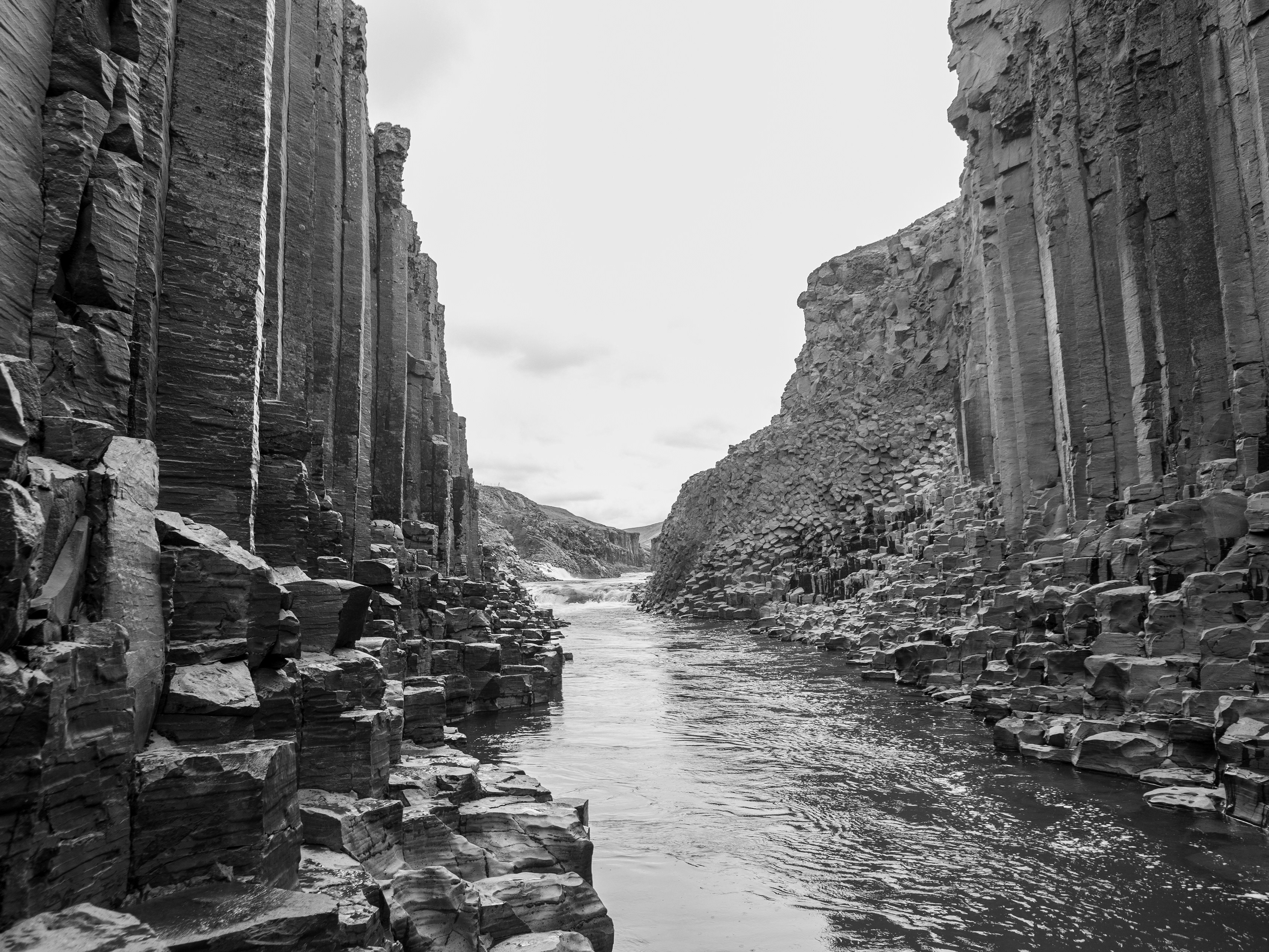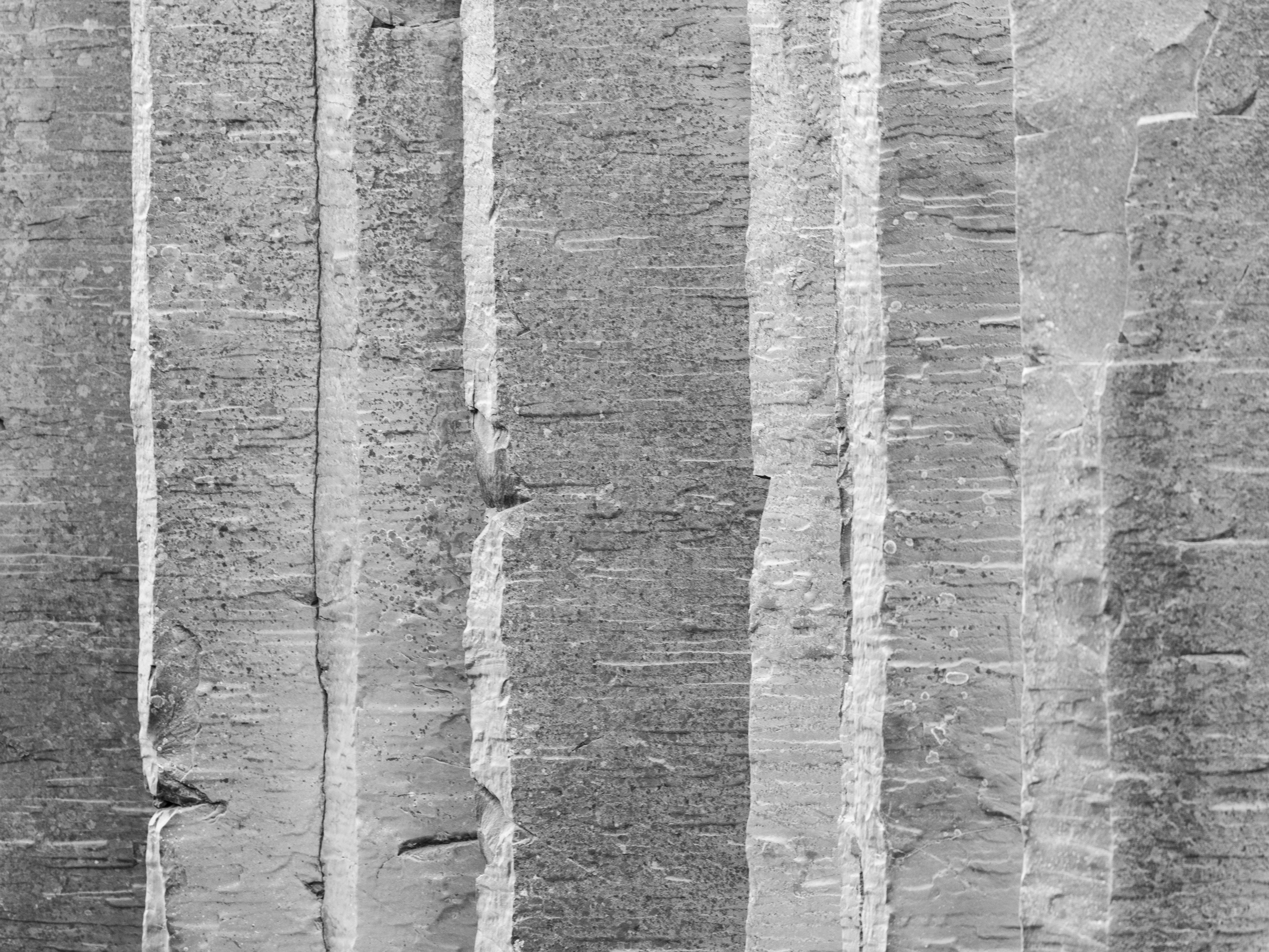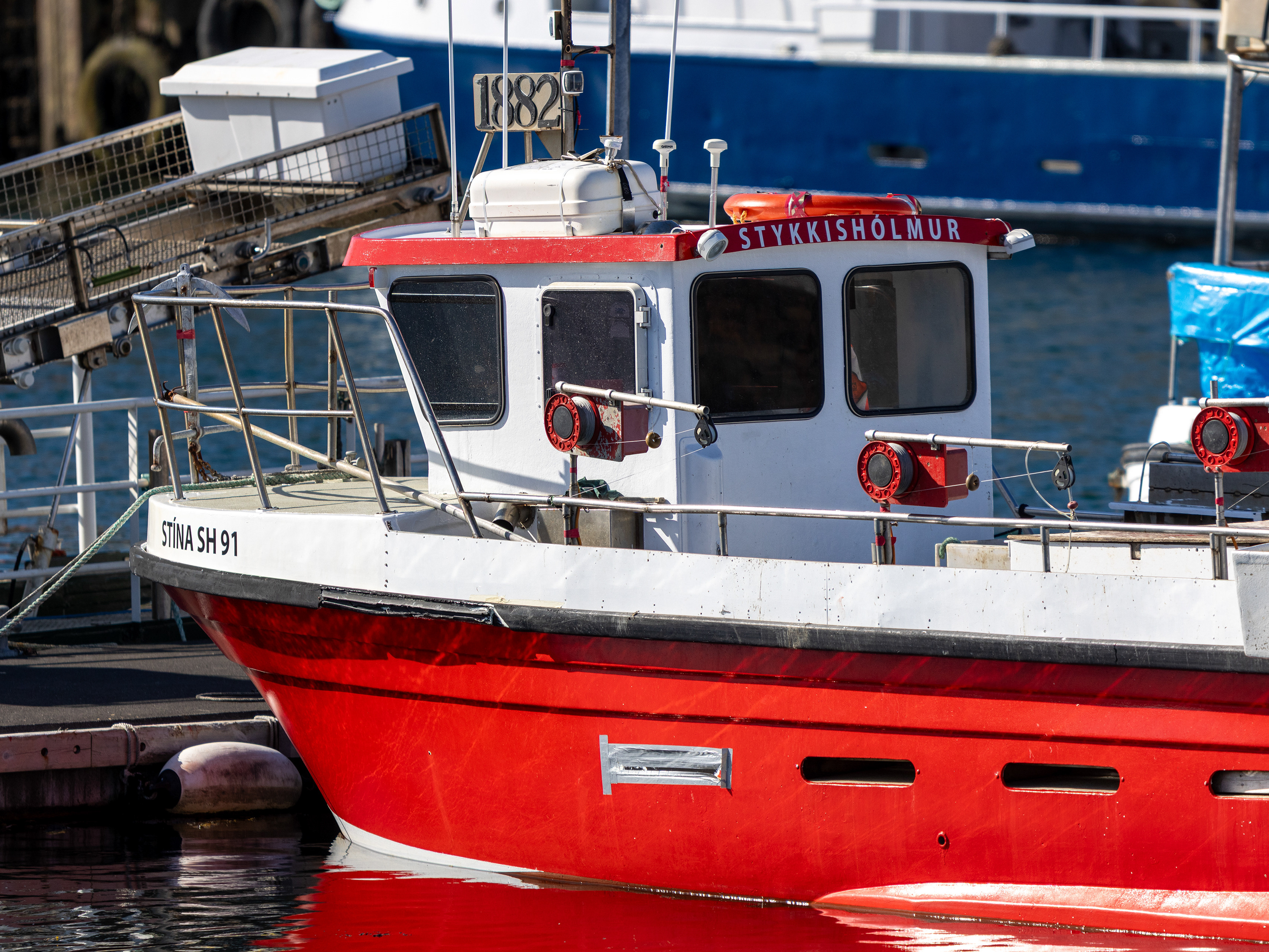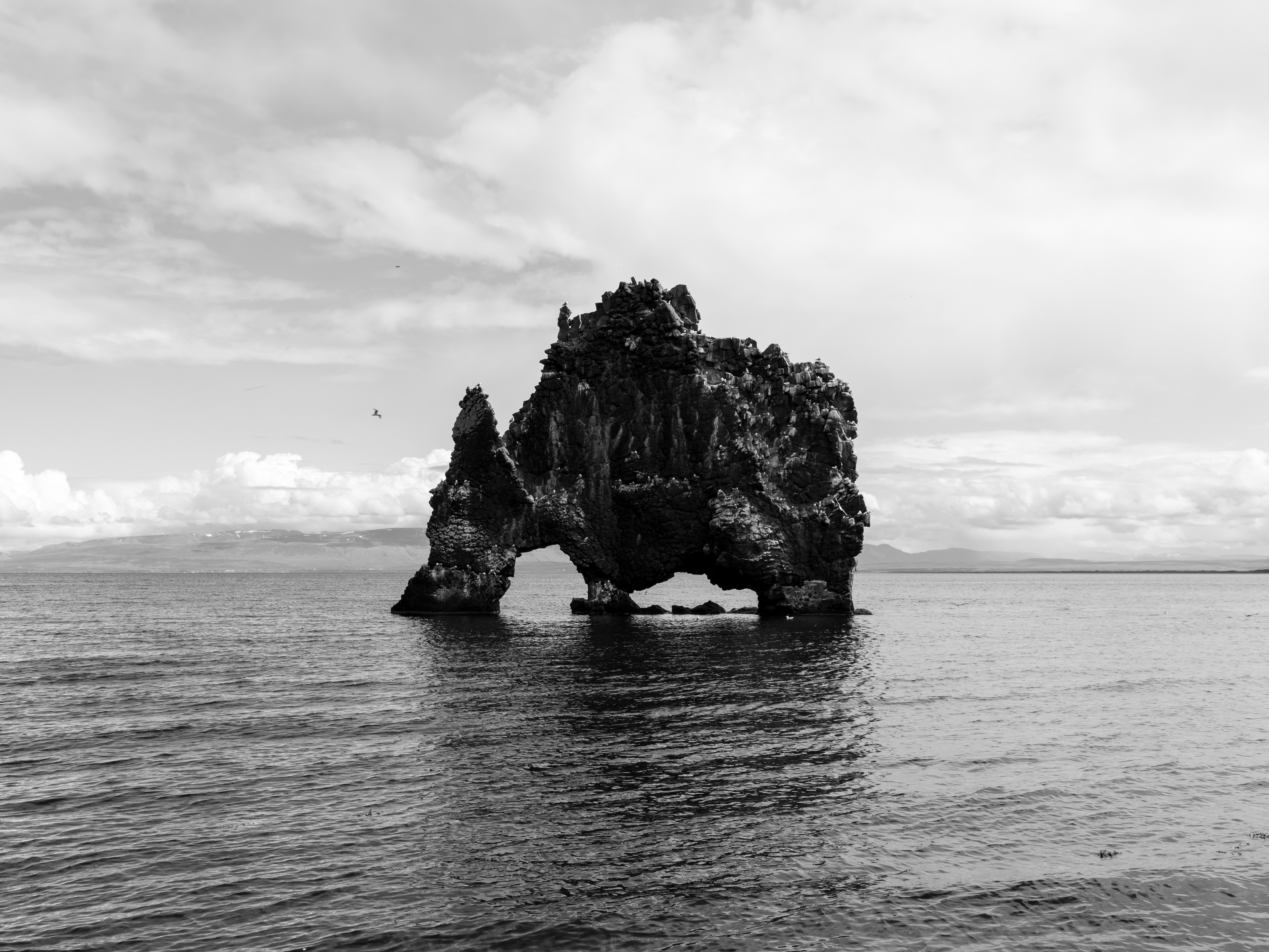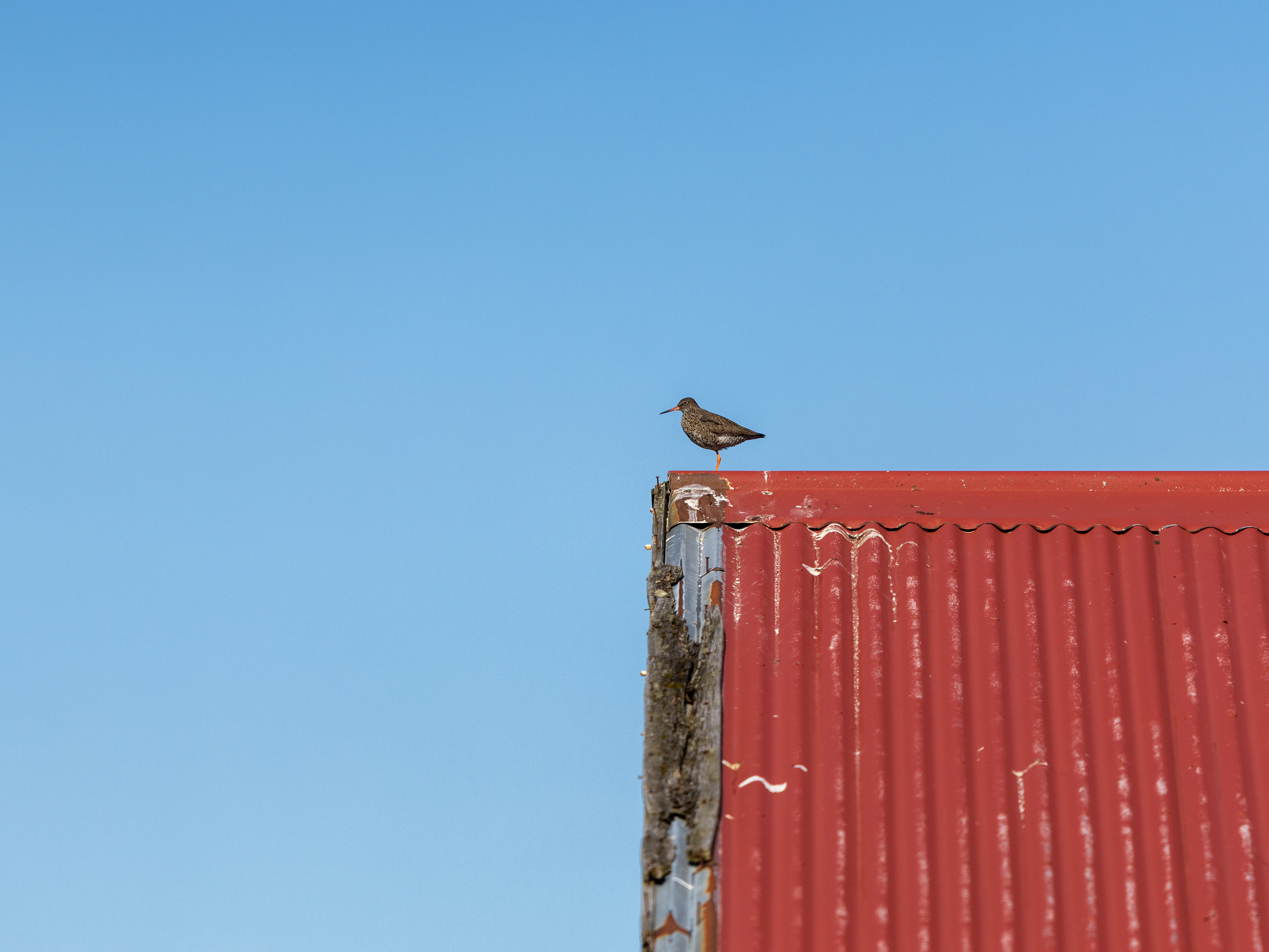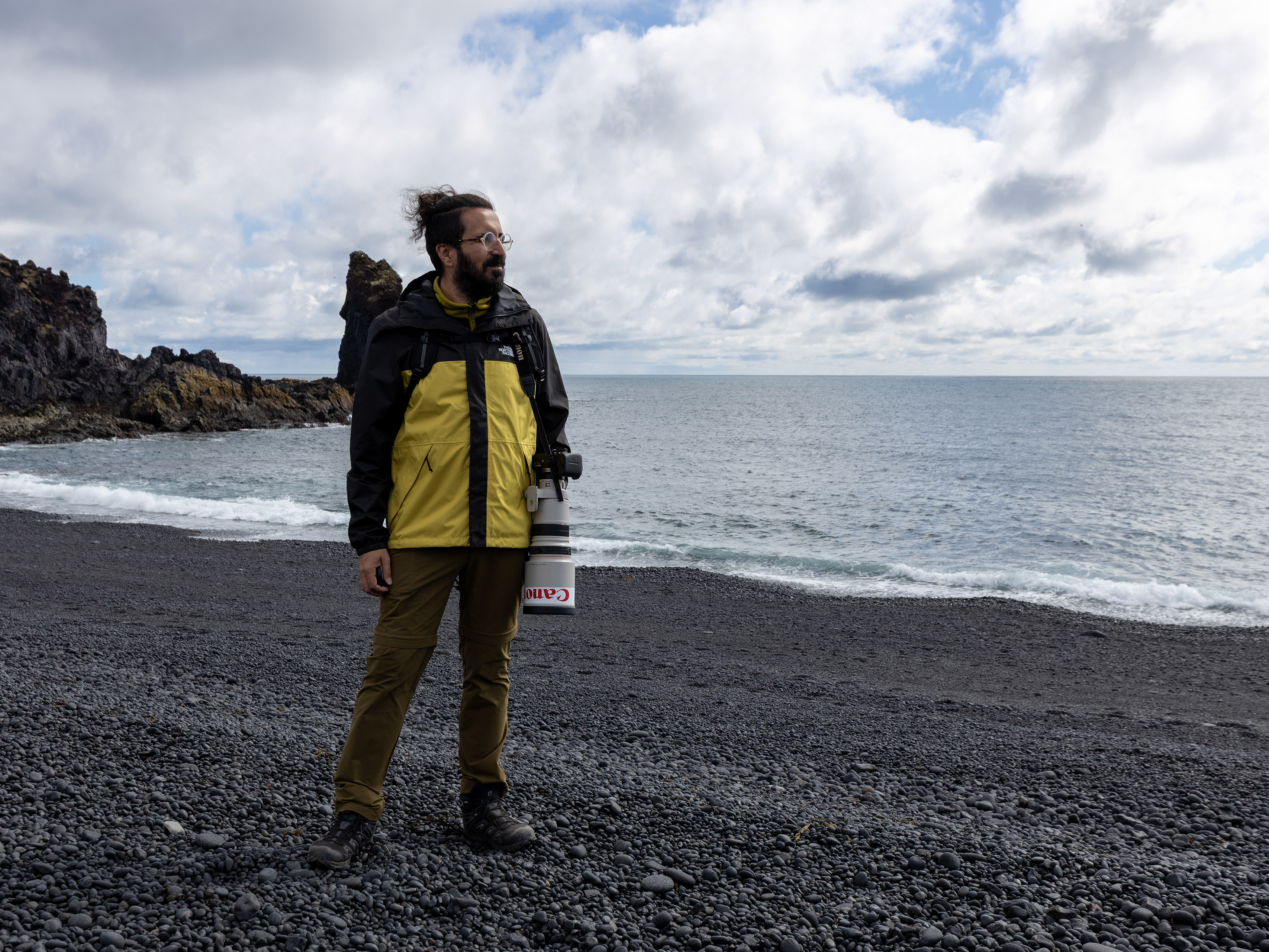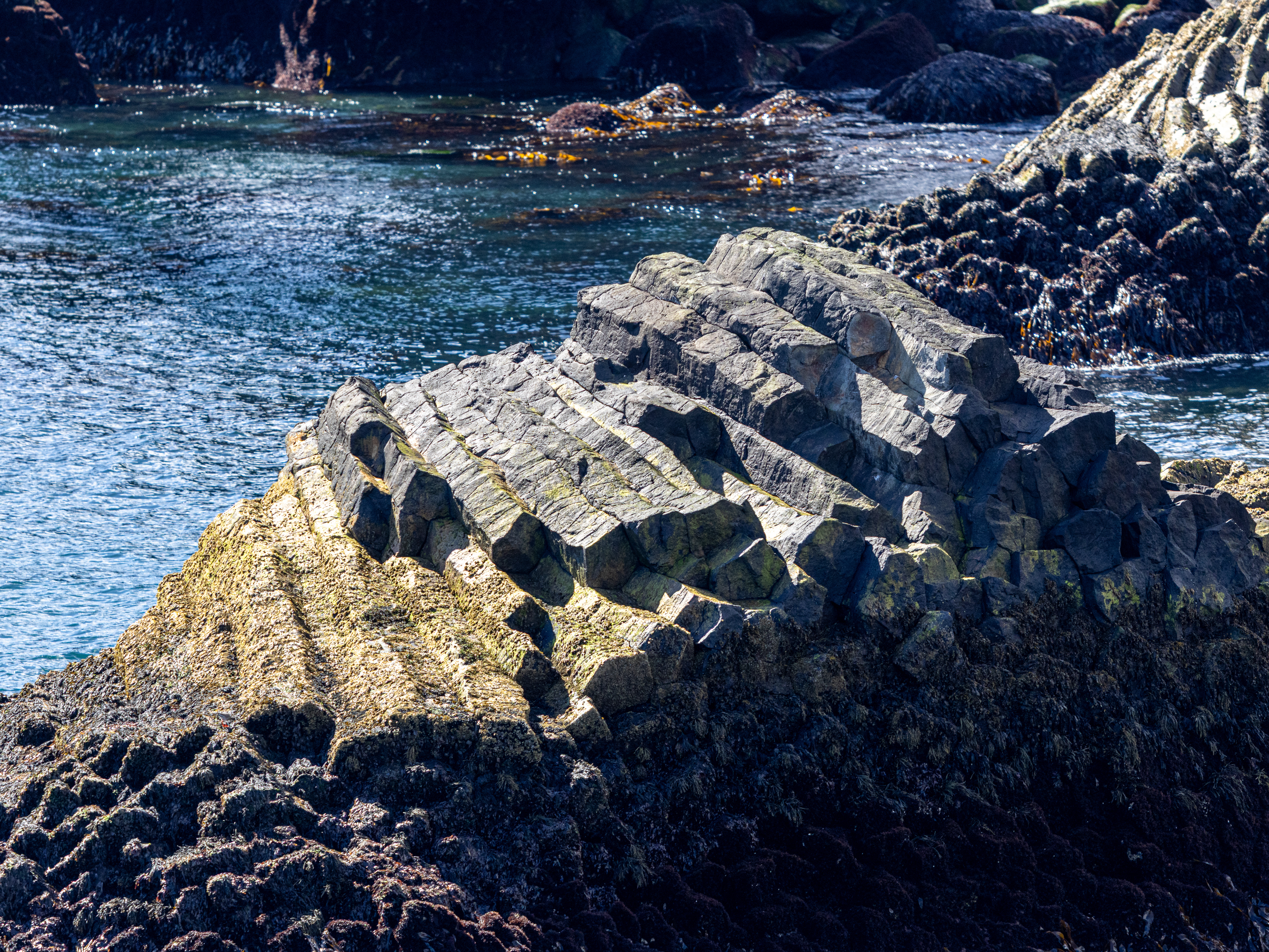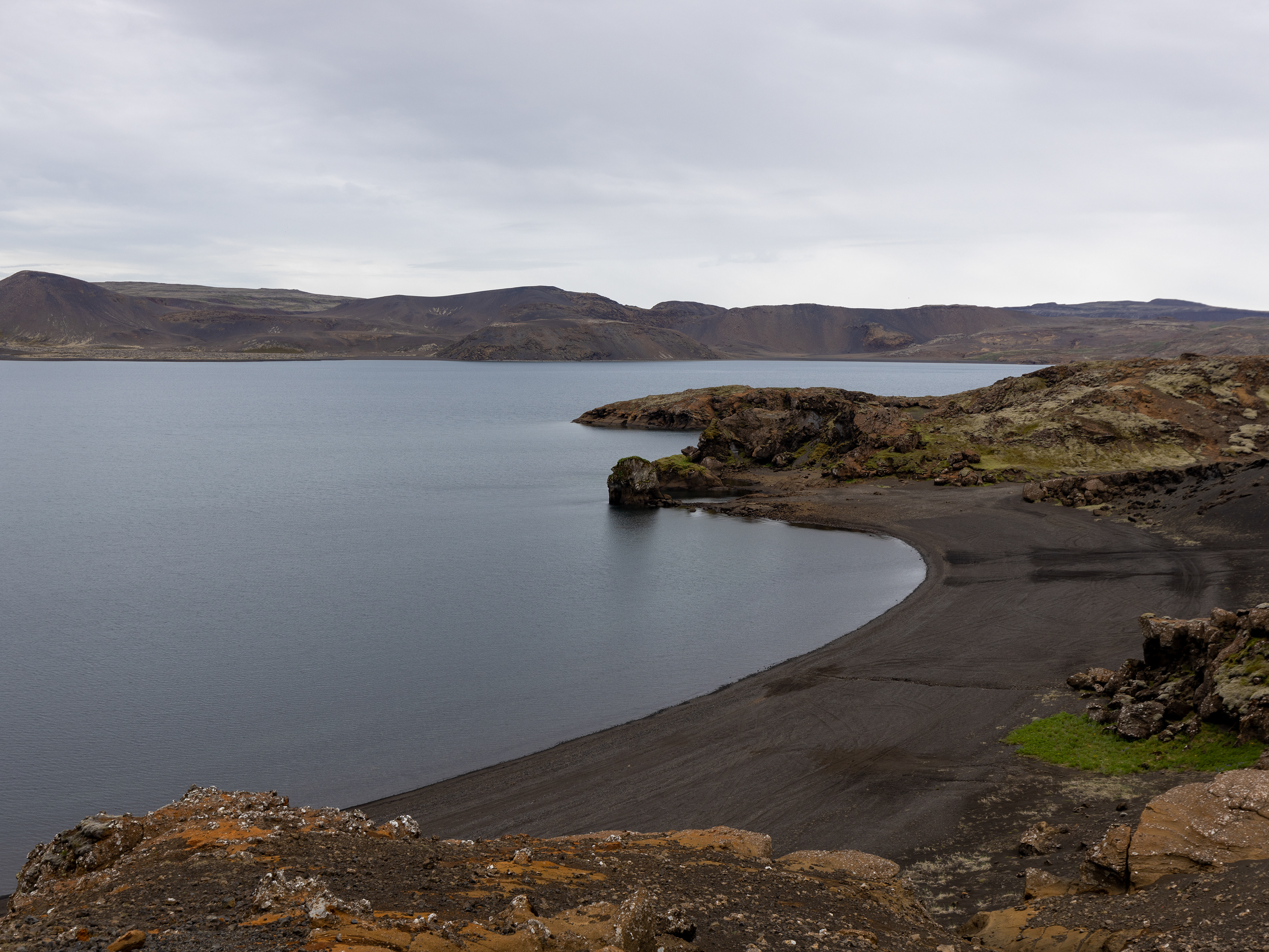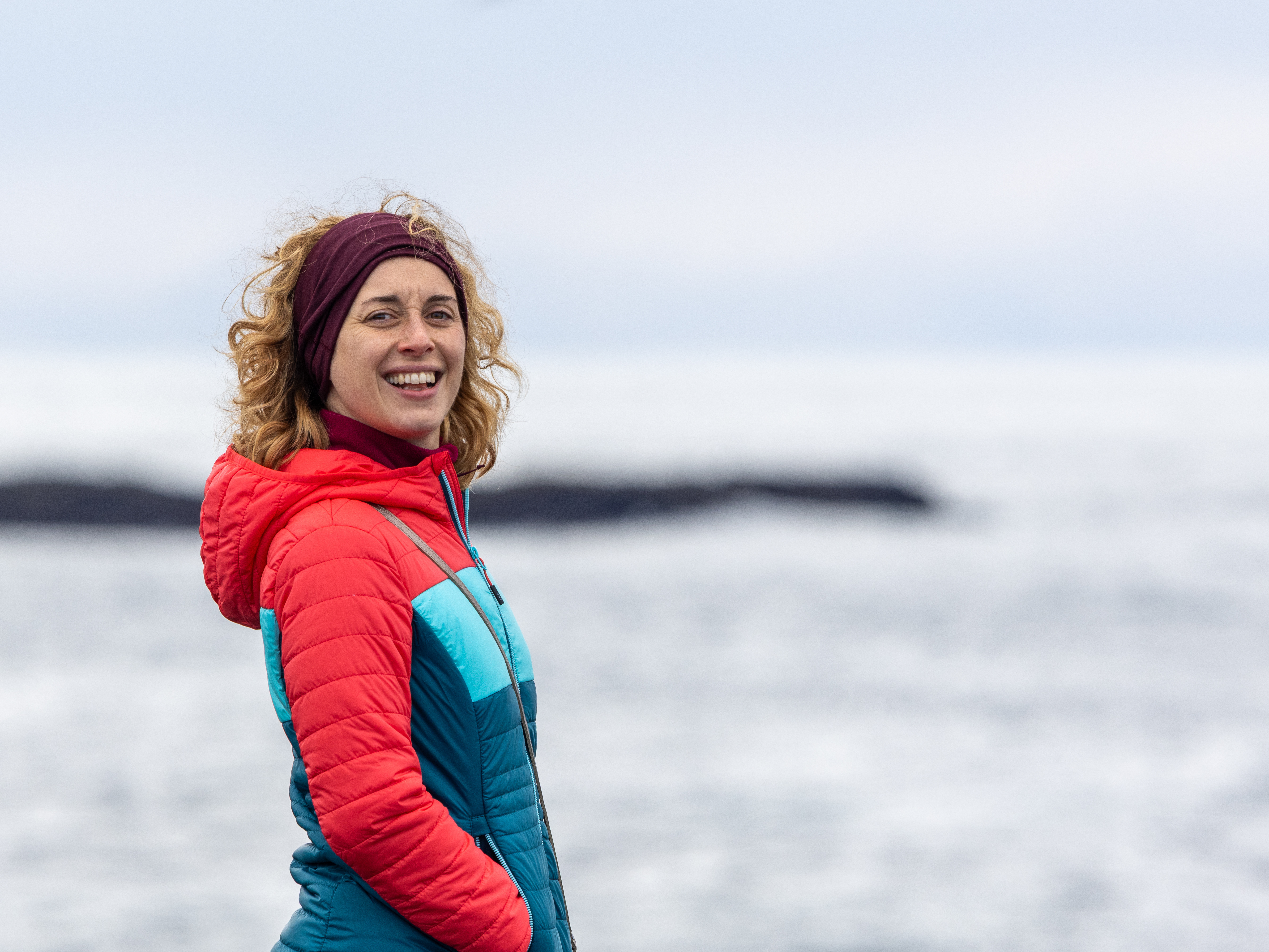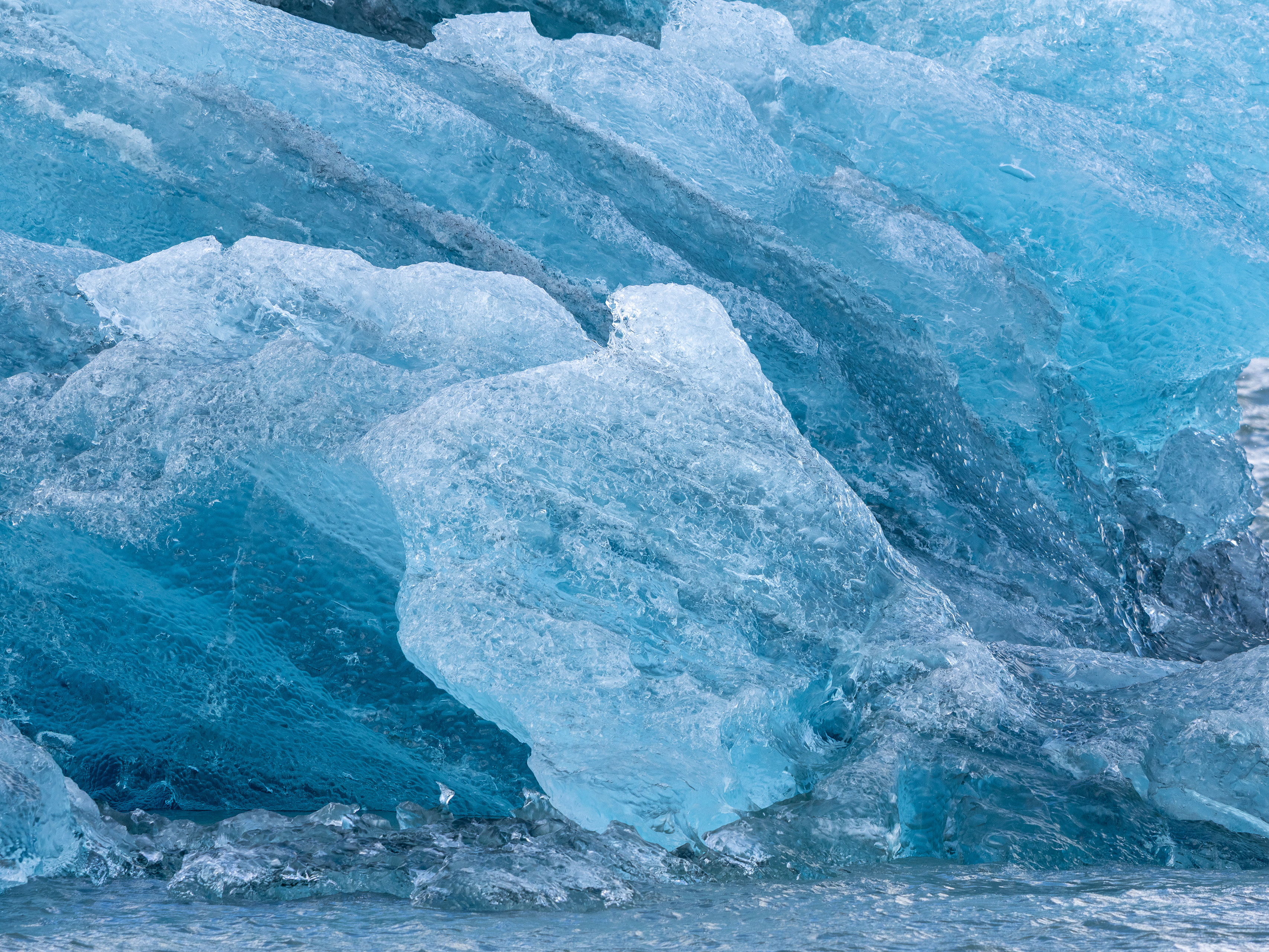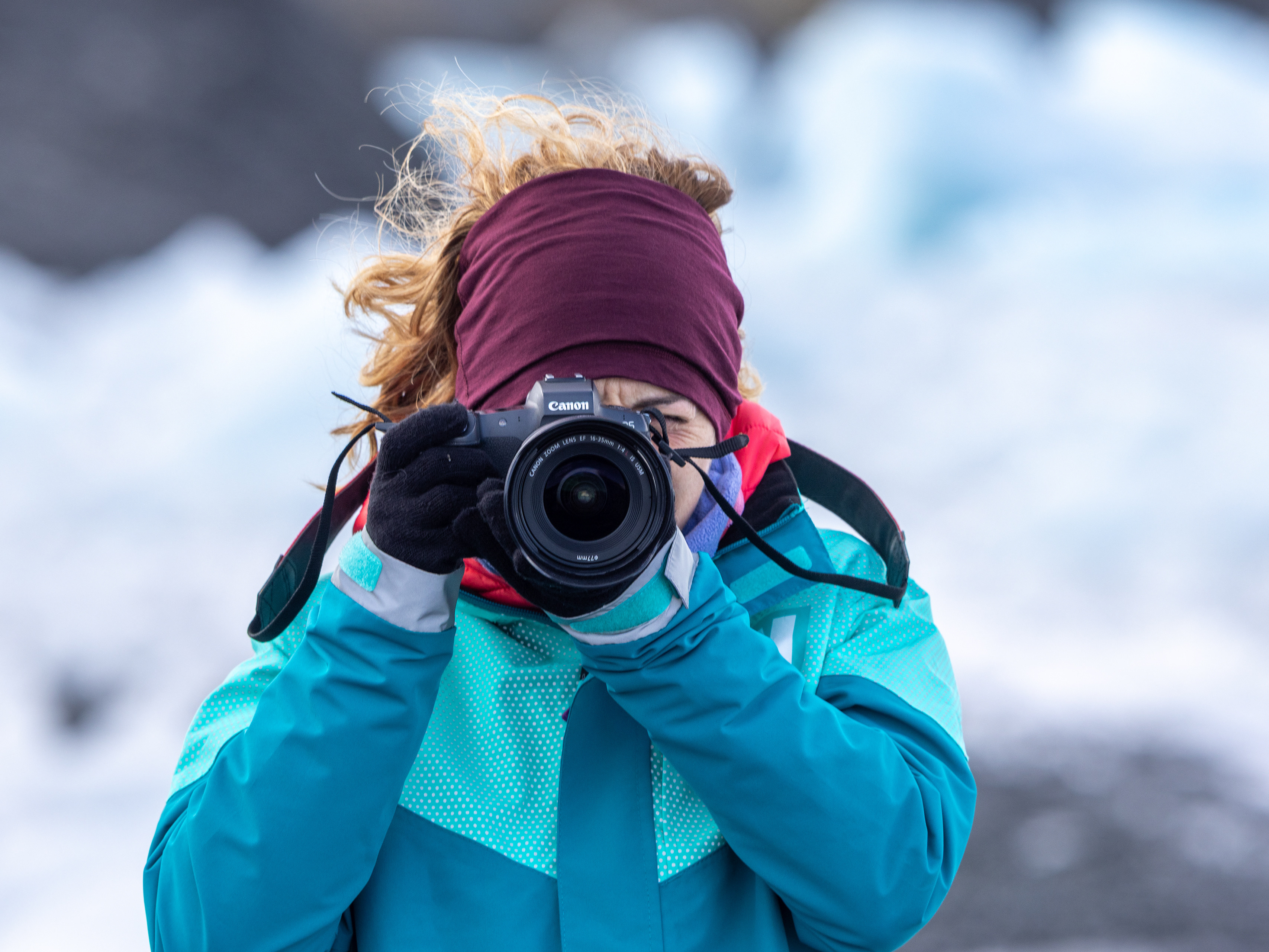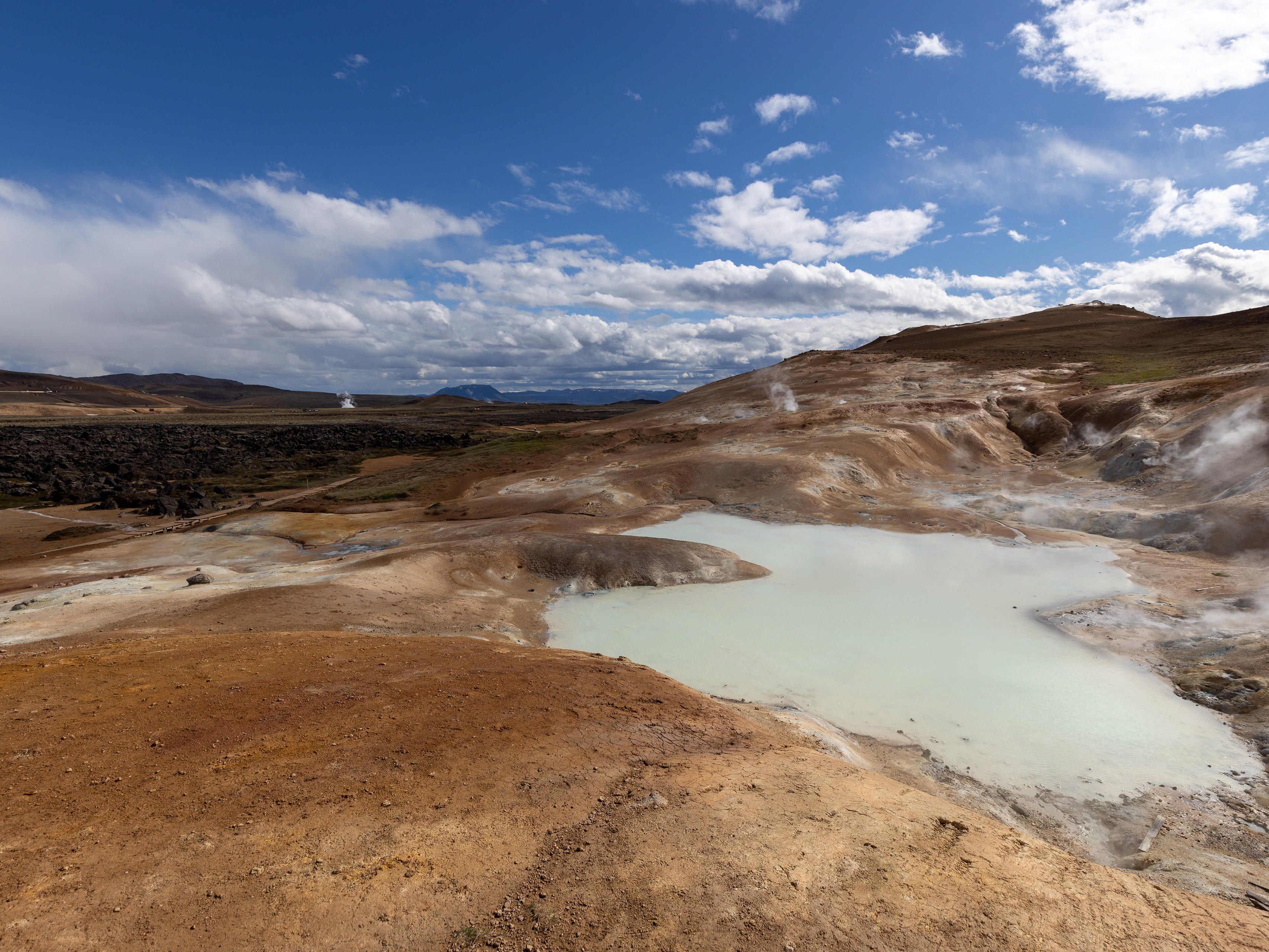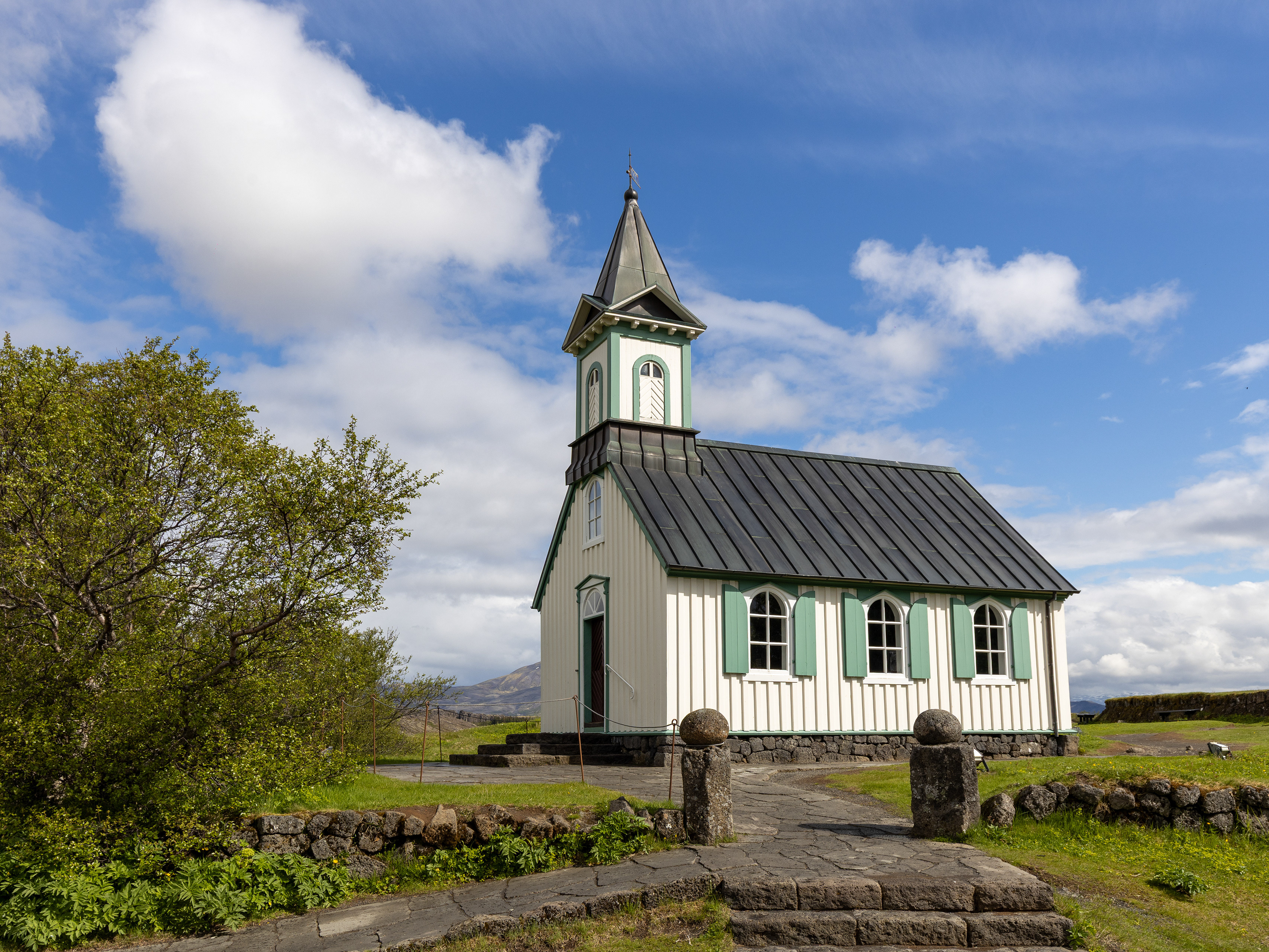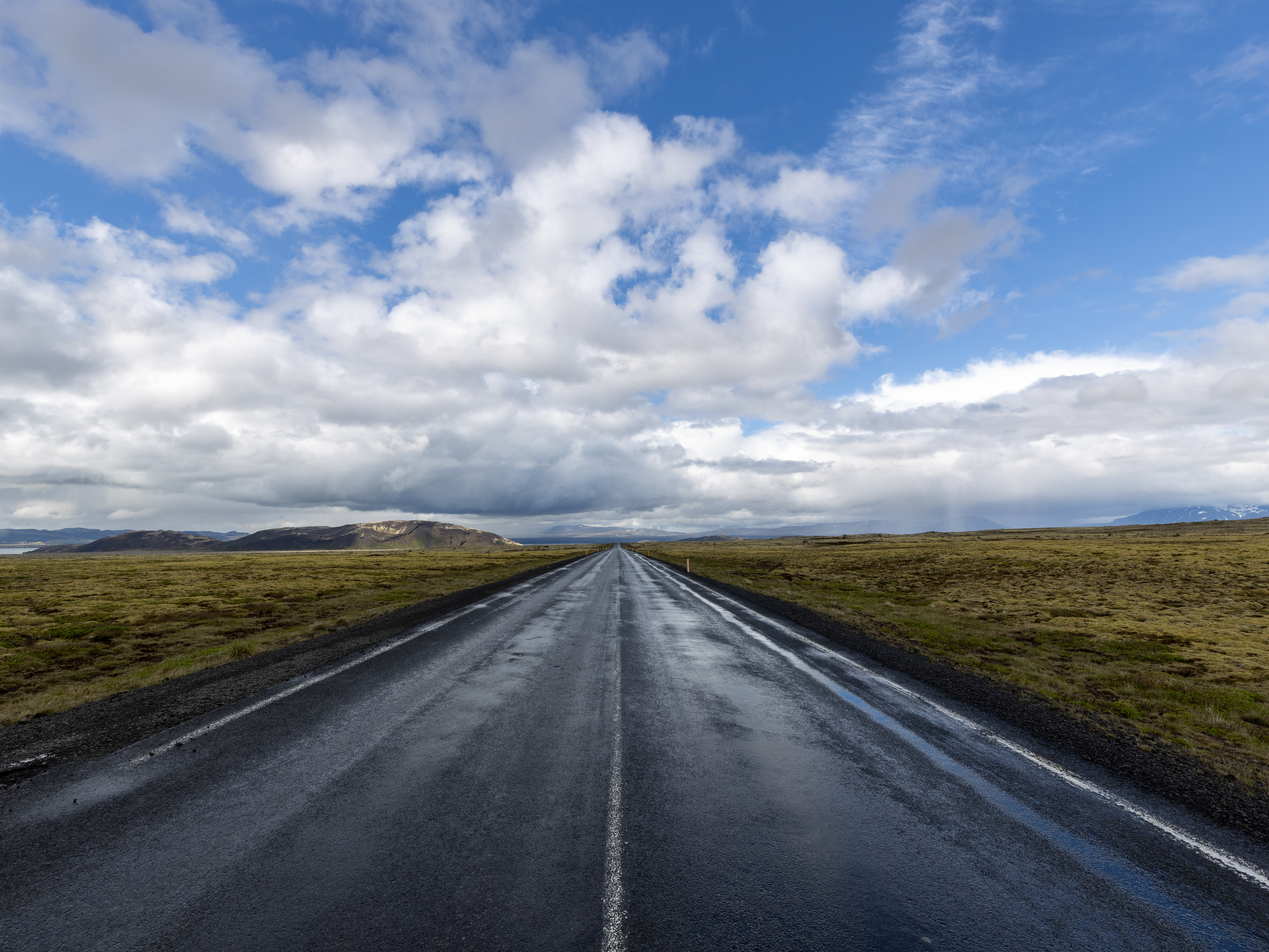Accouplement du huîtrier pie sur une prairie fleurie (Haematopus ostralegus) – Islande
Ce couple de huîtriers pie est saisi en pleine phase de reproduction, un acte qui renforce leur lien monogame avant la saison de nidification. L’espèce, bien représentée en Islande, pond à même le sol et élève ses poussins dans un environnement ouvert, souvent vulnérable aux prédateurs. Leur cri perçant est une signature sonore des côtes islandaises au printemps.
📷 Canon EOS R7 + EF 300mm f/2.8 L IS USM
Oystercatcher mating on a flowering Icelandic meadow (Haematopus ostralegus) – Iceland
This pair of Eurasian oystercatchers is captured during mating, a bonding act preceding the nesting season. Common across Iceland, the species lays eggs directly on the ground and raises its chicks in exposed environments, often at risk from predators. Their sharp, piercing calls are a hallmark of the Icelandic shoreline in spring.
Macareux moine en vol au-dessus des flots (Fratercula arctica) – Islande
Ses petites ailes battent jusqu’à 400 fois par minute pour maintenir son vol rapide et tendu. Le macareux moine peut ainsi atteindre près de 90 km/h, une performance remarquable pour un oiseau aussi compact. Cette puissance est aussi mise à profit lorsqu’il chasse sous l’eau, en “volant” littéralement dans les profondeurs à la poursuite de petits poissons.
📷 Canon EOS R7 + EF 300mm f/2.8 L IS USM
Atlantic puffin flying over the waves (Fratercula arctica) – Iceland
Its short wings beat up to 400 times per minute to sustain its rapid, direct flight. The Atlantic puffin can reach speeds of nearly 90 km/h, an impressive feat for such a compact seabird. The same wing power also allows it to “fly” underwater while chasing small fish with agility and precision.
Portrait rapproché de macareux moine en plumage nuptial (Fratercula arctica) – Islande
Le bec du macareux moine est l’un des plus emblématiques du règne aviaire. Son profil triangulaire et ses couleurs éclatantes — orange, jaune et bleu-gris — n’apparaissent qu’en saison de reproduction : les plaques kératinisées tombent partiellement à l’automne, laissant un bec plus terne en hiver. Véritable pince, il peut, grâce à une langue râpeuse et à un palais adapté, capturer et maintenir simultanément jusqu’à une dizaine de petits poissons sans en lâcher un seul. L’œil, cerclé de rouge et orné d’une membrane charnue triangulaire, renforce l’effet de « masque » et confère au macareux un regard expressif ; cette morphologie offre aussi une excellente vision sous-marine lorsqu’il plonge en apnée, se propulsant avec ses ailes pour chasser.
📷 Canon EOS R7 + EF 300mm f/2.8 L IS USM + Extender x1.4 II
Close-up of an Atlantic puffin in breeding colours (Fratercula arctica) – Iceland
The puffin’s bill ranks among the most iconic in the bird world. Its triangular profile and vivid bands of orange, yellow and blue-grey appear only in the breeding season; keratin plates are shed in autumn, leaving a duller winter bill. Acting like a clamp, the bill—together with a rasp-like tongue and specialised palate—lets the puffin catch and hold up to ten small fish cross-wise without losing any. The bright red eye ring and fleshy triangular eye-patch add to its striking “mask” and provide excellent underwater vision as the bird dives, wing-propelled, to hunt beneath the waves.
📍Reynisfjara – Islande
Située sur la côte sud de l’Islande, la plage de Reynisfjara est célèbre pour son sable volcanique noir et ses formations rocheuses spectaculaires, les Reynisdrangar. Ces aiguilles basaltiques surgissant de l’océan sont au cœur d’une légende locale : on raconte que ce sont deux trolls figés par les rayons du soleil en tentant de ramener un navire sur la terre ferme. Le contraste entre les éclats d'écume blanche et le sable sombre confère à ce lieu une atmosphère dramatique, renforcée par la puissance imprévisible des vagues – suffisamment dangereuses pour justifier une signalisation spécifique sur place.
📍Reynisfjara – Iceland
Located on Iceland’s southern coast, Reynisfjara beach is renowned for its black volcanic sand and dramatic rock formations known as Reynisdrangar. These basalt sea stacks are the subject of a local legend: two trolls were turned to stone by sunlight as they tried to drag a ship to shore. The stark contrast between the foaming white waves and the dark shore creates a moody, cinematic landscape, made even more intense by the unpredictability of the surf — so much so that official warning signs are posted to caution visitors about the powerful sneaker waves.
📍Skógafoss – Islande
Skógafoss, l’une des cascades les plus emblématiques du sud de l’Islande, chute d’une falaise haute de 60 mètres, marquant l’ancienne limite entre les hautes terres et la côte. Son débit puissant génère en permanence un nuage de fines gouttelettes, souvent à l’origine de spectaculaires arcs-en-ciel visibles depuis le bas de la chute. Selon une légende locale, un trésor d’or aurait été dissimulé derrière le rideau d’eau par le premier colon viking de la région — un anneau du coffre aurait été retrouvé, puis intégré à la porte de l’église de Skógar.
📍Skógafoss – Iceland
Skógafoss is one of the most iconic waterfalls in southern Iceland, plunging 60 meters from a former sea cliff that once marked the coastline. Its powerful flow creates a constant mist, which often gives rise to striking rainbows when the sunlight aligns. According to local folklore, the first Viking settler in the area hid a treasure chest behind the waterfall — legend has it that a ring from the chest was recovered and now adorns the church door in nearby Skógar.
📍Rútshellir – Islande
Nichée dans la falaise de Hrútafell, cette mystérieuse bâtisse adossée à la roche est l'une des plus anciennes structures troglodytes d'Islande. Connue sous le nom de Rútshellir, elle est constituée d'une grotte naturelle agrandie et d’un petit bâtiment en pierres sèches et bois, dont l’usage exact demeure incertain : entre grange, étable et abri habité. La légende locale raconte qu’un géant nommé Rút y aurait vécu, expliquant son nom. Ce lieu fascine par sa simplicité fonctionnelle et par le silence qui y règne, comme suspendu entre le réel et le mythe.
📍Rútshellir – Iceland
Set into the cliffside of Hrútafell, this curious rock structure is one of Iceland’s oldest known man-made cave dwellings. Known as Rútshellir, it combines a natural cave with a dry-stone and timber front, though its original purpose is still debated — perhaps a barn, stable, or even a shelter. Local legend claims it was once home to a giant named Rút, giving the site its name. Its austere presence and the hushed atmosphere evoke a timeless blend of practicality and folklore.
